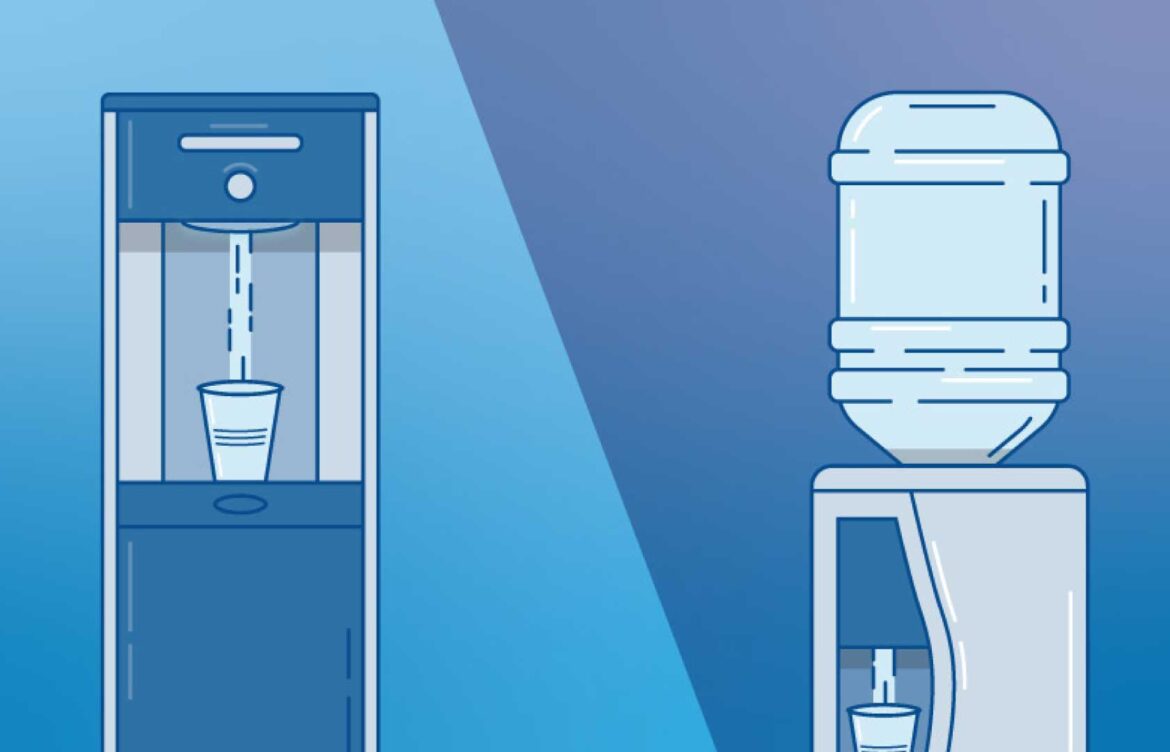
A Thorough Comparison of Bottled versus Bottleless Water Coolers
In the quest for convenient access to drinking water in the workplace and other settings, water coolers have become a staple. Broadly categorised into bottled and bottleless systems, each type offers distinct advantages and caters to varying needs. This article provides a professional comparison of these two dominant water cooler types, focusing on their fundamental differences to assist in the decision-making process for consumers and businesses alike.
Bottled Water Coolers: Traditional Convenience
Bottled water coolers are the more traditional type, consisting of a dispenser that houses and cools large pre-filled water bottles, typically in sizes ranging from 10 to 19 litres. The primary advantage of bottled water coolers is their mobility and ease of installation; they can be placed anywhere with floor space and require no direct connection to a water line. This makes them an excellent choice for areas where plumbing is inaccessible or for temporary setups.
The water provided in these coolers is often sourced from springs or purified through various methods, offering consistent taste and quality. However, the convenience of bottled water coolers comes with its own set of challenges. The regular delivery and storage of hefty water jugs can be cumbersome, and the reliance on supplier schedules may sometimes lead to water shortages. Furthermore, environmental concerns about plastic waste and the carbon footprint associated with the transportation of bottled water are prompting consumers to seek more sustainable solutions.
Bottleless Water Coolers: An Integrated Approach
In contrast to their bottled counterparts, bottleless water coolers, also known as point-of-use (POU) coolers, connect directly to the building’s water supply. These systems typically incorporate advanced filtration systems, including carbon filters, reverse osmosis, or ultraviolet light to purify tap water on demand. By providing an endless supply of clean water, bottleless coolers address the issue of running out of water and eliminate the need for bottle storage and replacement.
The environmental impact of bottleless coolers is significantly reduced, as they negate the need for plastic bottles and the associated transportation emissions. In terms of cost, although the initial investment in a bottleless system may be higher due to installation requirements, the ongoing expenses are often lower, as there are no recurring costs for water deliveries.
However, the installation of a bottleless water cooler is location-dependent, requiring access to a water line and potentially extensive plumbing work. It also necessitates a proactive approach to maintenance, with filters needing regular replacement to ensure water quality.
Conclusion
The decision between bottled and bottleless water coolers is multifaceted, hinging on factors such as location, usage, environmental considerations, and budget. Bottled coolers provide simplicity and portability but carry ongoing costs and environmental implications. Conversely, bottleless coolers offer sustainability and a potentially more economical approach over time, but demand an upfront investment and have specific installation criteria.
Whichever choice one makes, it is imperative to weigh the immediate and long-term ramifications of each option. Understanding the inherent differences between bottled and bottleless water coolers is crucial in selecting a water dispensing solution that aligns with individual preferences, workplace requirements, and environmental consciousness.